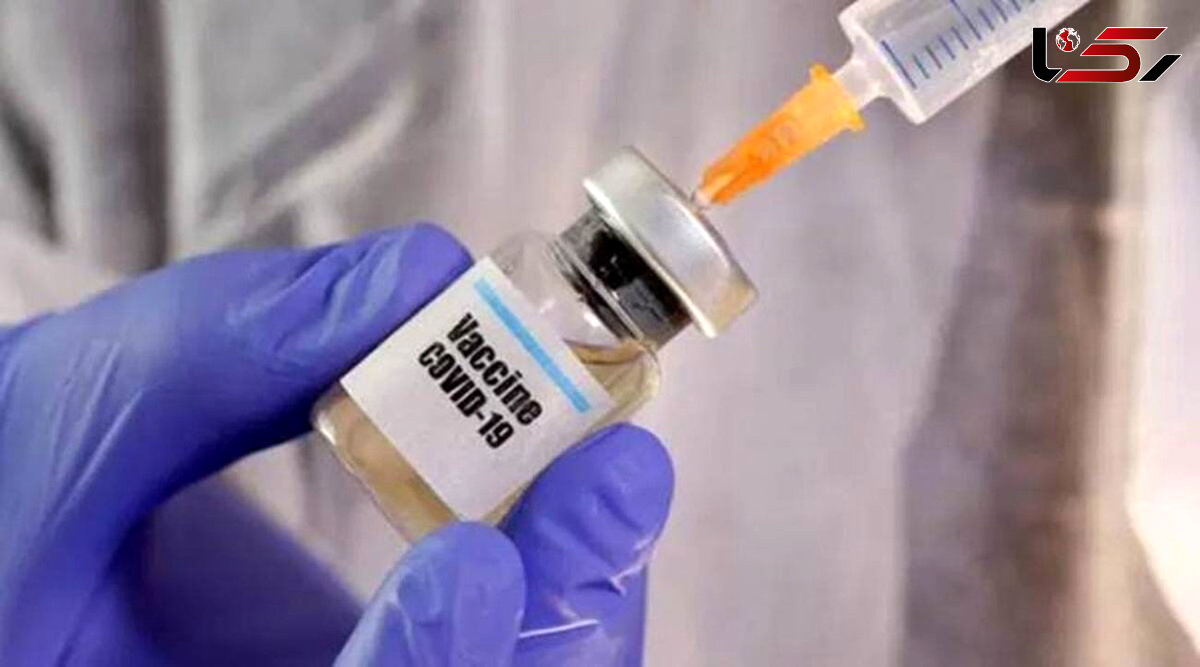Politics, science and the remarkable race for a coronavirus vaccine
Rokna: Pfizer and Moderna alone would not meet domestic or global demand, but other companies in the United States and around the world are also rushing toward effective vaccines, some of them using more proven technologies, so other winners are likely to emerge.

Moderna’s problem seemed fitting for late summer 2020, when the United States was reeling from not just a pandemic but unrest over racial injustice. Slaoui informed Bancel that Moderna had not recruited enough minority candidates into its vaccine trials. If it could not prove its vaccine worked well for Black and Hispanic Americans, who have been disproportionately affected by the pandemic, it would not make it over the finish line
Both companies ultimately completed the crucial stages of their human trials this month and reported spectacular initial results, vaccines that appear to be about 95% effective against a virus that has killed 1.3 million people, a quarter million of them in the United States.
Few corporate competitions have unfolded with so much at stake and such a complex backdrop. At play were not just commercial rivalries and scientific challenges but an ambitious plan to put the federal government in the middle of the effort and, most vexingly, the often toxic political atmosphere created by President Donald Trump. Betting that a vaccine would secure his reelection, he waged both public and private campaigns to speed the process.
Pfizer’s chief executive, Dr. Albert Bourla, had vowed to avoid the political minefield but was forced to maneuver through it nonetheless. After promising
progress on a timetable that seemed to support Trump’s prediction of a breakthrough before Election Day, Bourla pushed back the schedule in late October, fearing his firm’s clinical trial results would otherwise not be convincing enough for federal regulators to grant emergency approval of its vaccine. News of Pfizer’s success was announced just after the election was called for Joe Biden.
Bourla had chosen from the start to keep Pfizer and its research partner, German firm BioNTech, at arms length from the government, declining research and development money from the crash federal effort, called Operation Warp Speed.
Bancel, with a far smaller company, made the opposite bet, embracing the assistance of a government led by a science-denying president. Moderna got nearly $2.5 billion to develop, manufacture and sell its vaccine to the federal government and teamed up with the National Institutes of Health on the scientific work, a highly successful partnership that managed to sidestep the political meddling by Trump and his aides that had bedeviled other efforts to confront the virus.
Pfizer and Moderna alone would not meet domestic or global demand, but other companies in the United States and around the world are also rushing toward effective vaccines, some of them using more proven technologies, so other winners are likely to emerge.
Still, both companies, in their own very different ways, have pulled off a remarkable feat: developing a vaccine that appears safe and effective in a matter of months, rather than the years or decades that such developments usually take. They were aided by a confluence of three factors. A new method of developing vaccines was already waiting to be tested, with the coronavirus a perfect target. Sky-high infection rates accelerated the pace of clinical trials, the most time-consuming part of the process. And the government was willing to spend whatever it took, eliminating financial risks and bureaucratic roadblocks and allowing mass production to begin even before the trials were done.
Hitting the Ground Running
Bancel was in Switzerland for a business conference in January when he heard of a deadly new viral outbreak in Wuhan, China. He immediately reached out to two NIH vaccine experts with whom his company had been working for years to develop technology that could be used to design vaccines, a sort of plug-and-play system that would revolutionize how humanity confronts new pathogens.
If the systems worked, designing a vaccine would be done in days. The task remaining would include time-consuming trials to ensure the vaccine worked and was safe, a process that brooked no shortcuts.
The method employs a synthetic form of a genetic molecule called messenger RNA, or mRNA, to cause human cells to make a harmless viral protein called a spike, which then stimulates the immune system to make antibodies and immune cells that can recognize the spike quickly and counterattack when needed.
Bancel, 48, had what one former colleague described as a “warrior personality.” He had left a much bigger firm to become chief executive at Moderna in 2011, warning his wife that the firm’s mRNA bet had a 5% chance of success. But if that bet paid off, he told her, it would change the course of medicine.
In late 2019, he said, the Vaccine Research Center at NIH agreed to stage a war game of sorts the following spring, a mock pandemic with a virus unknown to Moderna to see how quickly the company could come up with a vaccine.
Now, with an actual pandemic at hand, Bancel wanted to try out Moderna’s approach for real.
NIH got in with them. Dr. John R. Mascola, the head of the Vaccine Research Center, and Dr. Barney Graham, the center’s deputy director, proposed the partnership to Dr. Anthony Fauci, the director of the National Institute of Allergy and Infectious Diseases.
“Go for it,” Fauci said he told them. “Whatever it costs, don’t worry about it.”
In Germany, husband-and-wife scientists Dr. Ugur Sahin and Dr. Özlem Türeci were on the same path. Their firm, BioNTech, had been working with Pfizer for several years to develop a new flu vaccine with the same mRNA technology that Moderna was using. Sahin said he asked a Pfizer executive on March 1 if the company wanted to chase a coronavirus vaccine.
Bourla had worked his way up over more than two decades from Pfizer’s animal health division to the chief executive’s office in 2019. Initially, the 59-year-old executive was mostly focused on protecting the company’s 90,000 employees in locations around the world.
But once he learned of the Germans’ proposal, he and his company moved quickly.
Operation Warp Speed
As the economy shuddered to a halt last spring and deaths mounted in New York, Detroit and Chicago, administration officials proposed a coordinated effort to develop tests, treatments and vaccines for what was now clearly the gravest public health crisis in a century.
Operation Warp Speed was the brainchild of Dr. Peter Marks, the top vaccine regulator for the Food and Drug Administration. A collaboration between the Pentagon and the Department of Health and Human Services, it was devised to support pharmaceutical and biotechnology companies with the full breadth of the government’s expertise from clinical trials to logistics. The goal for a vaccine was October, according to an early memo.
Warp Speed had two leaders. In charge of science was Slaoui, who had led research and development at drugmaker GlaxoSmithKline for years and had served on Moderna’s board of directors. In charge of logistics was Gen. Gustave F. Perna, a four-star general who led the Army Materiel Command.
The biggest decision, Slaoui said, was which vaccine candidates to back out of almost 50 possible contenders. His team decided on three types of vaccines, each to be pursued by two companies in case one firm failed.
Moderna and Pfizer would pursue the mRNA vaccines, seen as the fastest to develop. The government was ready to foot much of the development bill, guide the clinical trials and even deliver supplies to factories.
Bourla was not interested. As one of the world’s top vaccine producers, Pfizer did not need federal help in developing a new product, he decided, and with nearly $52 billion in annual revenues, it did not need or want the subsidy.
Moderna had no qualms about government help. “Guys, we don’t have a balance sheet like Pfizer,” Bancel said he told federal officials.
‘We Needed to Speak Up’
By early fall, political pressures that had been building all year burst into the open. Federal regulators were trying to issue guidelines to ensure enough follow-up of clinical trial participants to make sure the vaccines were safe, but White House officials were blocking them. The president was attacking FDA officials as antagonists intent on thwarting his reelection.
Bourla had been dragged into the political thicket, in part because of his own promises that Pfizer expected clinical trial results by October. The president ballyhooed that deadline on the campaign trail and tried to publicly link himself to Pfizer’s leader.
Sahin, of BioNTech and Pfizer’s partner, said Bourla was trying to manage “an uncomfortable situation.” But when the president went after the FDA, Bourla drew a line, deciding that public confidence in a vaccine was at stake. “We had statements against the FDA, the deep state, et cetera, that really were concerning for me,” he said. “We needed to speak up.”
He called Alex Gorsky, the chief executive of Johnson & Johnson, another leading contender in the vaccine race, then recruited leaders from other companies. Together, they drafted a statement that said the industry would “stand with science” and follow FDA guidelines. By Sept. 8, nine companies, including Moderna, had signed on.
At the same time, hitches in the design and execution of the clinical trials were emerging. Both Pfizer and Moderna were facing the problem of too few minority volunteers, but Pfizer had the deep pockets to solve it.
Fauci met with Moderna’s trial investigators and enlisted NIH experts to help the company reach more Black and Hispanic volunteers. Pfizer, whose trial was already designed to reach a result quicker than Moderna’s, was now indisputably ahead.
Good News
On Sunday morning, Nov. 8, Bourla headed to Pfizer’s office in Cos Cob, Connecticut, to hear the verdict with a few top aides. “I couldn’t sleep very much,” he said.
A Pfizer statistician, who was walled off from the rest of the company, was to deliver the news from the data monitoring board in a video conference.
“We had a very good result,” the man announced in the early afternoon. He said Pfizer should immediately ask the FDA to grant it emergency use authorization, a step the firm took Friday.
The room erupted in cheers. Executives hugged, ignoring social distancing rules.
Moderna had to watch Pfizer cross the finish line first. But Pfizer’s results buoyed the company’s hopes.
Last Sunday, expecting the results from Moderna’s trial, Bancel closeted himself in a home office in his Boston town house.
Just after noon, a notice shot across Moderna’s secure chat system to join a virtual meeting. With about a dozen other members, Bancel listened to the flat, disembodied voice of a representative from the outside panel.
The results were remarkably like Pfizer’s: Out of 95 infections, 90 were in the placebo group and five in the vaccine group.
Then the outside panel broke down the cases by severity of illness, a critical measure of the vaccine’s potency.
Eleven volunteers had developed severe illness, the voice said. Then came a pause that Bancel said “felt like forever,” before the final word: Every one of them had gotten the placebo.
source : indianexpress

Send Comments